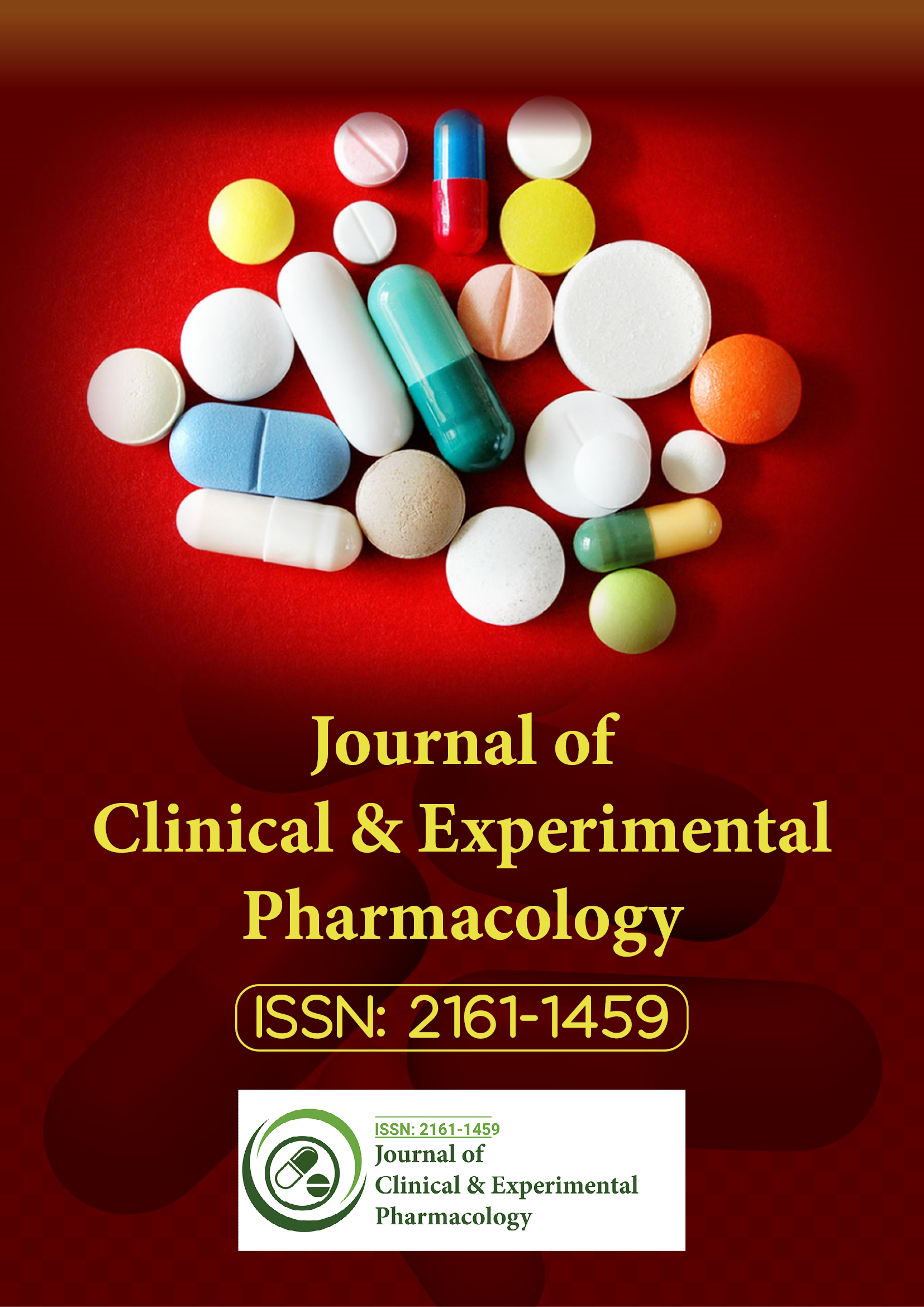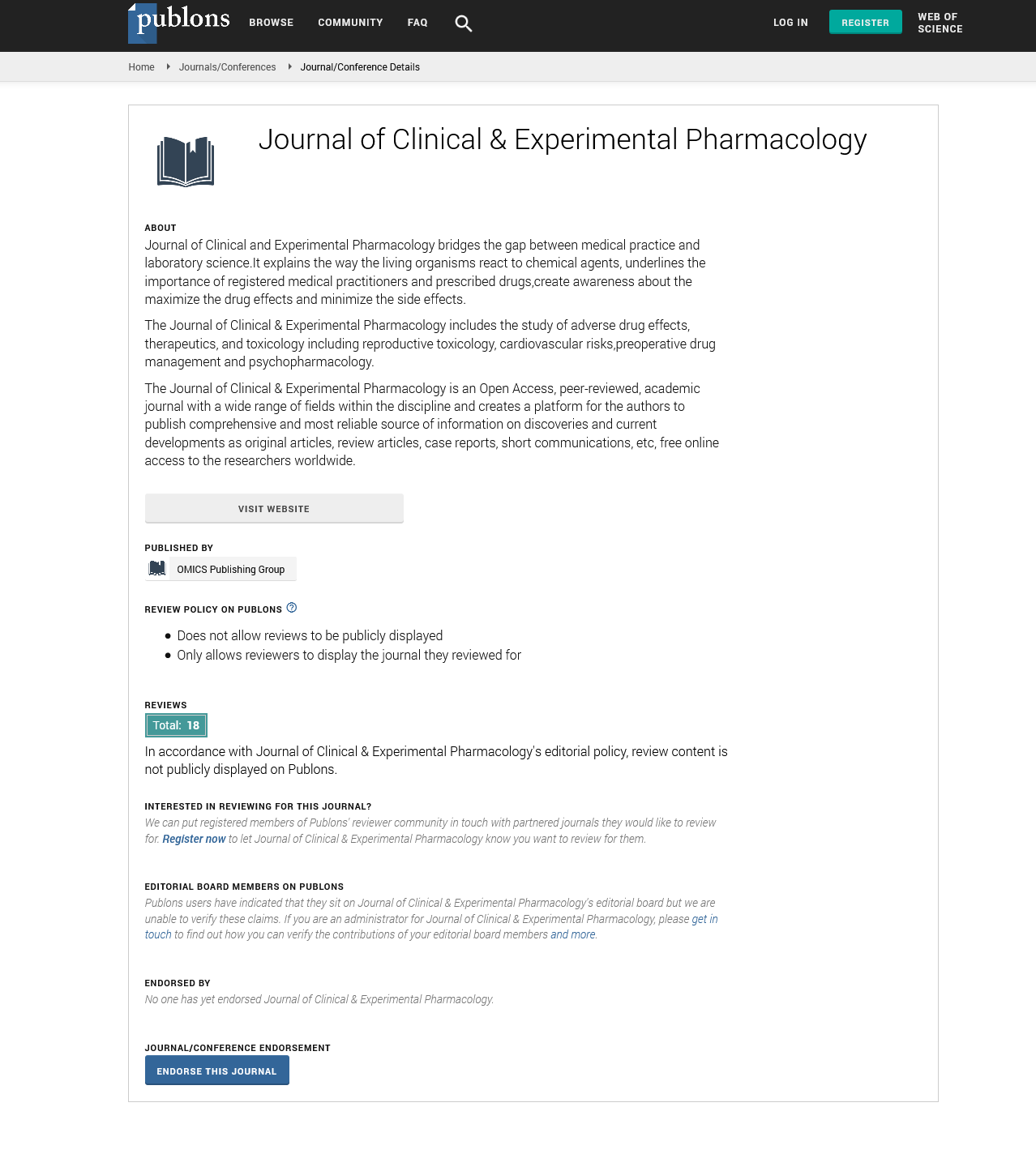Indexed In
- Open J Gate
- Genamics JournalSeek
- China National Knowledge Infrastructure (CNKI)
- Ulrich's Periodicals Directory
- RefSeek
- Hamdard University
- EBSCO A-Z
- OCLC- WorldCat
- Publons
- Google Scholar
Useful Links
Share This Page
Journal Flyer

Open Access Journals
- Agri and Aquaculture
- Biochemistry
- Bioinformatics & Systems Biology
- Business & Management
- Chemistry
- Clinical Sciences
- Engineering
- Food & Nutrition
- General Science
- Genetics & Molecular Biology
- Immunology & Microbiology
- Medical Sciences
- Neuroscience & Psychology
- Nursing & Health Care
- Pharmaceutical Sciences
Commentary Article - (2025) Volume 15, Issue 2
Drug Safety Through a Toxicological Lens: Mechanisms, Assessment Strategies and Clinical Relevance
Michael Richardson*Received: 24-Mar-2025, Manuscript No. CPECR-25-28862; Editor assigned: 26-Mar-2025, Pre QC No. CPECR-25-28862 (PQ); Reviewed: 10-Apr-2025, QC No. CPECR-25-28862; Revised: 18-Apr-2025, Manuscript No. CPECR-25-28862 (R); Published: 25-Apr-2025, DOI: 10.35248/2161-1459.25.15.472
Description
Toxicology plays an important role in pharmacology by examining the harmful effects of chemical substances, particularly pharmaceutical agents, on biological systems. While pharmacology focuses on the therapeutic properties and mechanisms of action of drugs, toxicology addresses the unintended, harmful consequences that may arise from drug exposure. The integration of these disciplines is fundamental to ensuring the safe development, evaluation and application of therapeutic agents.
Understanding drug toxicity is not only necessary during drug discovery and development but also during clinical use, where unexpected adverse effects may occur. Modern pharmacological research incorporates toxicological evaluation at every stage to minimize risk and protect human health.
Types of toxicity in pharmacology
Toxicity can manifest in various forms, depending on the drug’s chemical properties, dose, route of administration and patient-specific factors. Common categories include:
Acute toxicity: This refers to harmful effects that appear shortly after a single dose or brief exposure. Symptoms may range from mild discomfort to severe organ dysfunction or death. Acute toxicity studies are conducted early in preclinical trials using animal models to determine safe dosage limits.
Chronic toxicity: Long-term exposure to certain drugs may lead to gradual damage to tissues or organ systems. Chronic toxicity is particularly important when assessing medications intended for lifelong use. Liver, kidney and cardiovascular systems are often evaluated for long-term safety.
Organ-specific toxicity: Some drugs preferentially accumulate or affect specific organs. For example, aminoglycoside antibiotics may cause nephrotoxicity, while certain chemotherapy agents can lead to cardiotoxicity. Recognizing these patterns helps guide dose adjustment and monitoring protocols.
Genotoxicity and carcinogenicity: Some compounds can interact with DNA, leading to mutations or cancer development. Genotoxicity assays, such as the Ames test or chromosomal aberration tests, are used to assess a drug’s potential to cause genetic damage.
Reproductive and developmental toxicity: These forms of toxicity concern the effects of drugs on fertility, embryonic development and fetal health. Thalidomide, historically associated with severe birth defects, remains a well-known example of the need for stringent reproductive toxicity testing.
Mechanisms of drug toxicity
Drug-induced toxicity may result from multiple biochemical and physiological mechanisms. These include:
Off-target effects: Drugs may interact with unintended receptors or enzymes, causing undesired biological responses. For example, Non-Steroidal Anti-Inflammatory Drugs (NSAIDs) inhibit both COX-1 and COX-2 enzymes, but COX-1 inhibition may lead to gastrointestinal complications.
Metabolite formation: Some drugs are metabolized into reactive intermediates that bind to cellular macromolecules, leading to toxicity. Acetaminophen, in high doses, forms a toxic metabolite that depletes glutathione and damages liver cells.
Oxidative stress: Many toxic responses are mediated by the generation of Reactive Oxygen Species (ROS), which damage proteins, lipids and DNA. Antioxidant pathways may be overwhelmed in such cases, resulting in cellular injury.
Immune-mediated reactions: Drugs may trigger allergic or autoimmune responses. Hypersensitivity reactions range from mild rashes to severe conditions like Stevens-Johnson syndrome.
Mitochondrial dysfunction: Some drugs impair mitochondrial energy production, leading to apoptosis or necrosis. This mechanism is implicated in the toxicity of antiretroviral and antipsychotic drugs.
Preclinical toxicological testing
Before a drug can be tested in humans, it must undergo extensive preclinical toxicological evaluation in animal models. These studies assess multiple parameters:
LD50 (Lethal dose 50): The dose at which 50% of test animals die is a traditional measure of acute toxicity.
NOAEL (No-Observed-Adverse-Effect Level): This refers to the highest dose at which no adverse effects are observed. It forms the basis for setting human exposure limits.
Repeated dose toxicity: Animals are exposed to the drug over days or months to assess the effects of sustained administration.
Reproductive and developmental studies: These tests evaluate effects on fertility, embryonic development and offspring health across generations.
Clinical considerations and human toxicity
Despite rigorous preclinical testing, some toxic effects only become apparent during clinical trials or post-marketing surveillance. Human-specific factors such as genetic variation, age, sex, comorbidities and concurrent medications can all influence toxicity.
Therapeutic Index (TI): The TI represents the ratio between the toxic dose and the effective dose. A narrow TI, as seen with drugs like warfarin or digoxin, requires close monitoring to avoid toxicity.
Adverse Drug Reactions (ADRs): ADRs are categorized as predictable (dose-dependent) or unpredictable (idiosyncratic). The latter is more difficult to detect during development and often involves immune or genetic factors.
Drug-drug interactions: Co-administration of multiple drugs can affect absorption, metabolism, or excretion, increasing the likelihood of toxicity.
Regulatory aspects
Regulatory agencies such as the U.S. Food and Drug Administration (FDA) and the European Medicines Agency (EMA) mandate specific toxicological tests during drug development. These guidelines ensure that safety data are thoroughly evaluated before drugs are approved for clinical use.
In addition, pharmacovigilance systems track adverse events after a drug enters the market. This ongoing monitoring helps identify rare or long-term toxic effects that were not observed during trials.
Conclusion
Toxicology is a foundational element of pharmacological science, safeguarding human health by evaluating and understanding the adverse effects of pharmaceutical agents. By investigating the mechanisms, risks and outcomes of drug toxicity, this field contributes to safer medications and more informed therapeutic decisions. Continuous research and vigilance remain necessary as new drugs and treatment strategies are introduced into clinical practice.
Citation: Richardson M (2025). Drug Safety Through a Toxicological Lens: Mechanisms, Assessment Strategies and Clinical Relevance. J Clin Exp Pharmacol. 15:472.
Copyright: © 2025 Richardson M. This is an open-access article distributed under the terms of the Creative Commons Attribution License, which permits unrestricted use, distribution and reproduction in any medium, provided the original author and source are credited.

